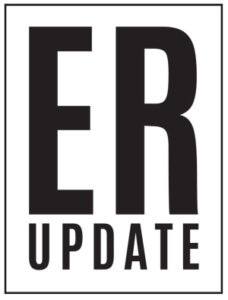Work health and safety should be a priority in every workplace. While most employers are aware of physical hazards such as slips, trips, and falls, it is also important to pay mind to psychosocial hazards. The Work Health and Safety Act 2011 (Qld) (the ‘’Act’) imposes health and safety duties on persons conducting a business or undertaking (PCBUs) and their Officers. This duty requires PCBUs and their Officers to:
- identify reasonably foreseeable hazards that could give rise to risks to health and safety; and
- implement controls to manage (eliminate or reduce) the risk of hazards so far as is reasonably practicable.
This duty extends to risks and hazards to physical and psychological health.
On 1 April 2023, a new Code of Practice: Managing the Risk of Psychosocial. Hazards at Work (‘the Code’) will commence. The code is a practical guide on how to prevent harm from psychosocial hazards at work, including psychical and physical harm.
Psychosocial Hazards under the Code
The Code focuses on managing the risk of psychosocial hazards in the workplace. A psychosocial hazard is a hazard that:
a) arises from, or relates to:
- the design or management of work,
- a work environment,
- plant at a workplace,
- workplace interactions and behaviours
b) may cause psychological harm, and may also cause physical harm.
What can psychosocial hazards look like?
Every workplace will have psychosocial hazards, however the risk of those hazards will vary. Common psychosocial hazards can include:
- high and/or low job demands or control
- bullying and harassment including sexual harassment
- poor support
- low role clarity
- low reward and recognition
- poor organisational justice
- poor workplace relationships including interpersonal conflict, remote or isolated work
Managing psychosocial hazards in the workplace
There are 4 steps employers can use to monitor and minimise the risk of psychosocial hazards at work.
- Identify psychosocial hazards
Consider what risks are present or are likely to be present in your workplace.
E.g. have there been aggressive customers? Have employees voiced concerns that their workload is too high and they are stressed? Are employees rarely recognised for doing good work? Is there a high level of conflict amongst the team?
- Assess level of risk the identified hazards may present
Does this hazard present frequently? Is it severe? Is it prolonged or for short periods?
E.g. The team has to handle disorderly and abusive patrons most nights. The patrons tend to get belligerent and don’t follow directions. This is stressful for the team and some of them dread coming to work. This is an ongoing, severe, and frequent hazard.
- Implement controls to manage the risk
Consider what the employer can do to eliminate or, if elimination is not possible, manage this risk. Options to consider include policies, procedures, training, and staffing in ways that address the risk.
E.g. The employer recognises these patrons are often disrespecting their team. The employer ensures the team has training on how to de-escalate agitated patrons, puts a Code of Conduct in place for the venue, and sets a clear chain of command for escalating concerns to a manager if a patron is refusing to cooperate.
- Monitor and review controls
Continue to monitor how effective these controls are and complete risks assessments periodically.
E.g. the employer asks the team how they find the changes are going and if there is anything that it has not helped with. The employer takes on any feedback and reconsiders the controls where necessary.
Monitoring and reviewing hazards and controls should be an ongoing process. Managers must ensure, so far as reasonably practicable, that there is a safe work environment and safe systems of work. There should also be sufficient information, training, instruction and supervision to protect workers from risks to their health and safety.
Further Information
The QHA’s Employment Relations team are preparing resources to assist members with understanding psychosocial hazards. These resources will be sent out to members via email in an upcoming ER Bulletin. If you do not currently receive the ER Bulletin and would like to be added to the subscription list, please contact the team.
QHA members seeking more information or wishing to discuss a specific employment relations matter are encouraged to contact the Employment Relations Department for a confidential discussion by calling 07 3221 6999 or emailing er@qha.org.au.

